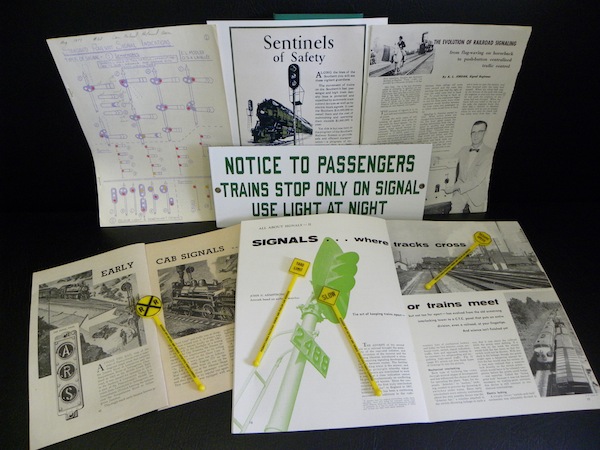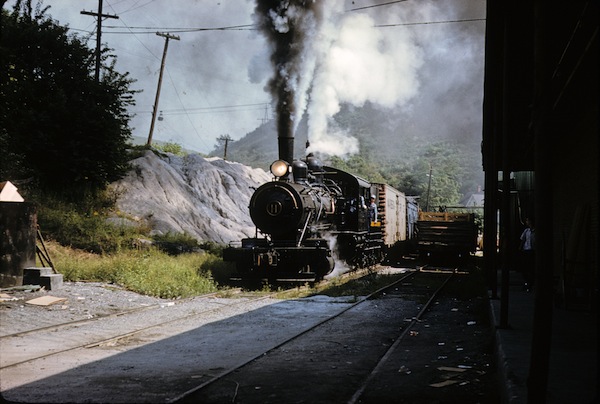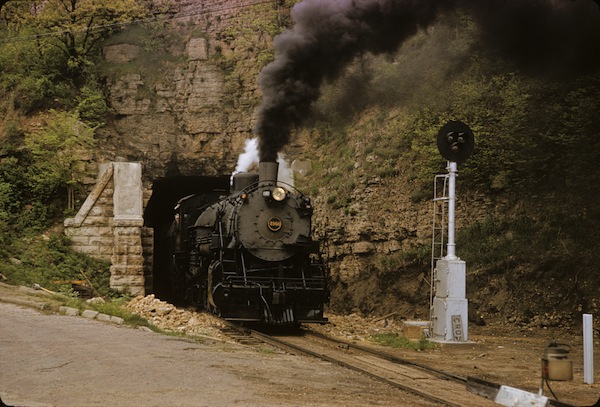
Category Archive: PHLF News
-
Thank You Spring and Summer Interns
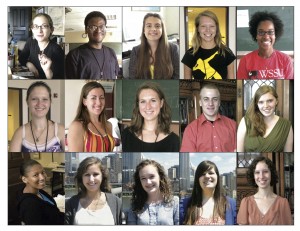
Since March, PHLF has involved 15 students (high school, college, and graduates) in its educational programs and preservation activities. As volunteers with PHLF, each student decides how many hours a week and what days he/she is able to help out. Once here, interns assist with school tours, workshops for teachers, research and archival assignments, and main street programs. And, if they enjoy being with students, they help out with CampDEC, a 20-day adventure with middle school students in the Pittsburgh Public School’s Summer Dreamers Academy. Thank you everyone for your help and effort!
As a result of their experiences, interns add to their portfolios and gain a new (or deeper) appreciation for Pittsburgh’s architecture and history and for the economic, social, and cultural benefits of historic preservation. Intern comments on the value of their experiences include the following:
- Julie Edwards: “PHLF has given me a deeper understanding of Pittsburgh’s extensive architectural heritage and a greater appreciation for the built environment.”
- Alyssa Malobicky: “Thank you for welcoming me back to PHLF again. The hands-on involvement in the day-to-day activities of PHLF teaches me so much. I appreciate all that PHLF does to keep Pittsburgh a special place.”
- Ashley Moore: “Through interning with PHLF, I have a new-found appreciation for Pittsburgh. It is amazing how evidence of the city’s changes was here long before I was and may be here long after I am gone.”
- Barrett Reiter: “My experiences with the educational, non-profit portion of PHLF have taught me that educating future generations is as important as preserving the accomplishments of those past. Without understanding and a personal connection to the built environment our unique history is too easily lost.”
- Shane Martin: “My time with PHLF has broadened my horizons on subjects ranging from historic preservation to urban design and the strenuous human effort put into the systems that hold our society together. I was fortunate to work alongside the very minds that ensure our city’s rich history and put forth my own efforts at planning the future.”
We thank the following 15 people (all pictured above) who volunteered their time and talent to PHLF:
- Lauren Borrelli, Penn State University (Architecture)
- Emily Bush, Miami University of Ohio (History/Journalism)
- Julie Edwards, Kent State University graduate (Interior Design)
- Michal Gould, University of Pittsburgh
- Stacy Litwinowicz, West Virginia University (Interior Design)
- Samantha Mabe, Clemson University (Architecture)
- Alyssa Malobicky, Virginia Tech (Landscape Architecture)
- Shane Martin, University of Pittsburgh (Urban Studies/Architectural Studies)
- Grace Meloy, University of Pittsburgh (Architectural Studies/Civil Engineering)
10. Ashley Moore, University of North Carolina graduate (Masters of Urban Design)
11. Barrett Reiter, University of Pittsburgh (History/Political Science/Historic Preservation)
12. Katherine Schmotzer, Baldwin High School
13. Emily VanBuren, Slippery Rock University––Masters (History)
14. Camden Yandel, Saint Vincent College (Graphic Design)
15. Sydney Zalewski, Carnegie Mellon University (Architecture/Photography)
To learn more about PHLF’s volunteer internship program click here.
-
Fairbanks Feature: STOP! LOOK! LISTEN!— THEN GO!
James D. Van Trump Library | Frank B. Fairbanks Transportation Archive | Fairbanks Features
 Showcasing a variety of materials located in the Frank B. Fairbanks Rail Transportation Archive
Showcasing a variety of materials located in the Frank B. Fairbanks Rail Transportation ArchiveNo. 10 Presentation
Fairbanks Feature: STOP! LOOK! LISTEN!— THEN GO!
Years ago, these three words––STOP! LOOK! LISTEN!–– were very common in schools across the country as safety lessons were taught on a regular basis. The burden for arriving safely was placed on the individual, as he or she went about on the public thoroughfares. Since railroad crossings and tracks were a common part of towns, this instruction for all ages or people was extremely necessary. Of course, not everyone paid attention to the seriousness of these rules, and many tragic accidents happened.
Even today, people are still playing the odds while sprinting across the tracks. Maybe it is time to re-teach some of these valuable safety lessons. Come to the Frank B. Fairbanks Rail Transportation Archive to see the following materials and so much more:
STOP!––Here are two books from our collection dealing with signals, and containing drawings, plans, and detailed yard layouts.
- Tyer’s Patent Train Signalling Telegraphs, by Tyer & Company, Electric Telegraph Engineers and Contractors, 4th edition, 1873
- Lewis’s Railway Signal Engineering (Mechanical), by J. H. Fraser, B. Sc., A.M. Inst. C. E., London, 1932
LOOK!––Here are three original safety posters from the 1920s and 30s.
LISTEN!
- “A Private Rail Car,” Northern Rail Car introduces an unrivaled method for entertaining clients in a luxurious environment.
- “Rock Island Rooster,” Muscatine, along the Upper Mississippi: the viewer can watch the rail line from atop the 1896 Government Bridge. The Railroad Development Corporation and Iowa Interstate Chairman Henry Posner III talk about how the project came to be and some of the challenges involved. These trips formed the centerpiece of “Riverway 2006,” celebrating the 150 years of the first bridge across the Mississippi.
- “Penn Central,” Big, Black, Busy––and Bankrupt––not the glory years.
- VCR tapes “Steam in the Andes,” “Broadway Limited,” and “Horseshoe Curve,” along with many others in our collection, provide rail history in audio and visual color spectacular.
THEN––Here are several articles and artifacts from the Fairbanks’ collection on signaling.
GO!––Here are two steam engine slides from our collection:
- 9/5/60: Olin Machieson Rail, photos by the Saltville RR Station, Saltville, Va. 2-8-0 East Tenn. & Western North Carolina engine No. 11; built 1892
- 5/20/61: West Portal Chicago Burlington Quincy Davenport to Dubuque Iowa, Iowa Chapter National Railway Historical Society, Steam Ramble
The Frank B. Fairbanks Rail Transportation Archive is open by appointment on Mondays, from 10:00 a.m. to 5:00 p.m. Use of the archive is free to PHLF members (one of the benefits!); non-members are assessed a $10 use fee.
The Archive is located on the fourth floor of The Landmarks Building at Station Square, in the offices of the Pittsburgh History & Landmarks Foundation.
To schedule an appointment, email the Librarian James Halttunen: James@phlf.org
-
PHLF Celebrates Scholars at Luncheon
 During a luncheon celebration on June 20, David Brashear, Chair of the Landmarks Scholarship Committee, welcomed scholarship winners and their parents and former recipients who were able to attend. This year’s winners are Jaela Wesley (Schenley), Christopher Guyan (South Fayette), Lisa Stabryla (Carrick), Anthony Chmura (North Hills), and Shane Fischbach (Allderdice).
During a luncheon celebration on June 20, David Brashear, Chair of the Landmarks Scholarship Committee, welcomed scholarship winners and their parents and former recipients who were able to attend. This year’s winners are Jaela Wesley (Schenley), Christopher Guyan (South Fayette), Lisa Stabryla (Carrick), Anthony Chmura (North Hills), and Shane Fischbach (Allderdice).In his remarks David said, “Know that you come from one of the very best places in the world. Know that you have grown up in a place where respectfulness and manners matter, where friendliness is a way of life, where humility is considered to be a positive trait, and where you are considered to be not only a member of the community but a member of a family.
“Pittsburgh has given you much that will help you become successful. You’ve received great educations, and you’ve grown up in a city and region rich in cultural and recreational diversions.
“We couldn’t be happier to welcome you to our scholarship community. We hope that you will come back and see us every year for this luncheon and we hope you will develop a lasting relationship with our organization and with Louise and her staff.”
Since 1999, PHLF has awarded 45 scholarships ($4,000 each, for book and tuition expenses only) to graduating high school students who have excelled academically, are active in their communities, and care deeply about the Pittsburgh region.
PHLF will be accepting Landmark Scholarship applications again in April 2012.
-
Historic Designations in Pittsburgh: A Primer
Pittsburgh has a wealth of historic buildings. How these buildings are historically designated and whether these buildings are protected by their designations varies depending on the type of designation. This primer provides a brief overview of the various historic designations of buildings and districts throughout Pittsburgh.
National Historic Landmarks: Brings Benefits to Property Owners; No Restrictions
This is the highest category of distinction. In Pennsylvania, the National Historic Landmark program is administered by the Pennsylvania Historical and Museum Commission (PHMC) and the National Park Service (NPS). National Historic Landmarks are nationally significant historic places that “possess exceptional value or quality in illustrating or interpreting the heritage of the United States.” There are fewer than 2,500 NHLs in the country. There are 11 in Allegheny County: the Allegheny County Courthouse and Jail, the Bost Building, Braddock Carnegie Library, Carrie Furnaces, Chatham Village, Emmanuel Episcopal Church, Forks of the Ohio, Kennywood, Oakmont Country Club, the Smithfield Street Bridge, and Woodville Plantation.
NHL listing has similar results as the National Register listing (as discussed below). One difference is that further protection is provided under Section 110 of the National Historic Preservation Act (NHPA) in the case of a federal undertaking. Section 110 requires that government agencies, “to the maximum extent possible, undertake such planning and actions as may be necessary to minimize harm to any National Historic Landmark that may be directly and adversely affected by an undertaking.”
Click here for more information on NHLs.
National Register of Historic Places: Brings Benefits to Property Owners; No Restrictions
The National Register of Historic Places “is the official list of the Nation’s historic places worthy of preservation.” In Pennsylvania, the National Register is administered by the PHMC and the NPS. To be eligible for the National Register, a property or district must possess historic integrity and meet one of the following four Criteria for Evaluation: (a) that are associated with events that have made a significant contribution to the broad patterns of our history; (b) that are associated with the lives or persons significant in our past; (c) that embody the distinctive characteristics of a type, period, or method of construction, or that represent the work of a master, or that possess high artistic values, or that represent a significant distinguishable entity whose components may lack individual distinction; or (d) that have yielded, or may be likely to yield, information important in prehistory or history. Buildings and structures can be listed individually on the National Register or as a contributing structure to a National Register-listed historic district.
In Pennsylvania, National Register nominations are submitted to and reviewed by the Bureau of Historic Preservation of PHMC. (PHLF is one of the many groups/individuals qualified to complete and submit a National Register nomination for a structure or district.) A property owner must consent to an individual National Register listing and, in the case of districts, a district will not be listed if a majority of the property owners object to the nomination.
Listing on the National Register (1) identifies and honors historic properties of national significance; (2) provides federal preservation tax incentives, such as the 20% rehabilitation tax credit and a charitable contribution deduction for a preservation easement donation; (3) satisfies an eligibility requirement of many federal and state grant programs; and (4) requires government agencies, if there is a federal undertaking, to evaluate alternatives to mitigate adverse impacts on historic properties pursuant to Section 106 of the NHPA. It does not place any restrictions or obligations on a property owner.
There are more than 85,255 listings on the National Register and more than 1,616,138 total contributing structures. For more information on the National Register and the application procedures, click here to visit PHMC’s website and visit the NPS’s website, here.
City of Pittsburgh Historic Designation: Requires Approval Process for Exterior Changes
Title 11 of the City of Pittsburgh (City) Code permits the historic designation of structures, districts, sites, and objects that meet one or more of the ten criteria listed in §1101.04. Nominations are initially submitted to the City’s Historic Review Commission (HRC) for approval. Public hearings and votes are held by the HRC, the Planning Commission and the City Council to approve a nomination.
Once designated, any new construction, demolition, or alteration of exterior architectural features which can be seen from a public street or way are subject to review and approval by the HRC. A property owner must obtain a certificate of appropriateness from the HRC prior to commencing work.
While City historic designation does provide a review process to ensure that exterior alterations are appropriate to a building or district, it does not provide a permanent protection. Property owners may petition to have a building and/or district’s designation removed or apply for an economic hardship to circumvent the requirements of Title 11. For example, in 2000, at the request of former Mayor Tom Murphy, the HRC approved the demolition of numerous buildings in the City-Designated Market Square historic district to make way for his Fifth/Forbes plan, that was ultimately defeated due to public protest.
For more information on the City’s historic designation process and a list of City-Designated structures and districts, visit the HRC’s website.
PHLF Historic Landmark Plaques: No Restrictions
Since 1968, PHLF has been awarding Historic Landmark plaques to buildings, structures, districts and landscapes that meet the following conditions: (1) they are remarkable pieces of architecture, engineering, construction, landscape design, or planning, or impact a rich sense of history; (2) alterations, additions, or deterioration have not substantially lessened their value in the above respects; (3) they are at least 50 years old and located within 250 miles of Pittsburgh; and (4) they are not located in historic districts bearing a plaque (unless of exceptional individual significance).
The Historic Landmark plaque is an honorary designation that identifies the site as a significant part of our local heritage, but it does not protect a building from alteration or demolition. PHLF’s Historic Designation Committee generally meets once a year to review all nominations and recommend awards. Since 1968, PHLF has awarded 546 Historic Landmark plaques. For an application and more information, visit PHLF’s website.
Preservation Easements: Offers Protection in Perpetuity
While it is not a designation per se, one of the strongest tools for protecting a historic building is a preservation easement. A preservation easement is a legal agreement between a property owner and a qualified organization, such as PHLF, that places permanent restrictions on the exterior of a building. For example, changes may not be made to the façade of a building that are contrary to the U.S. Secretary of the Interior’s Standards for Rehabilitation without the prior written approval of PHLF.
Preservation easement agreements are recorded in the local deed registry office and run with the land. For buildings listed on the National Register or contributing to a National Register historic district, a property owner may be eligible to receive a federal charitable contribution deduction for the donation of a preservation easement. PHLF holds preservation easements on more than thirty (30) properties in five (5) counties. For more information on preservation easements, visit PHLF’s website.
Designation Summary
To summarize, the various types of historic designations have different criteria and different impacts, but they all bring attention to our region’s rich architectural heritage, facilitate economic development, and encourage heritage tourism.
Historic Designation Owner Consent Needed for Designation? Restriction of Property Rights? Section 106 Review? Eligible for Federal Tax Incentives? National Historic Landmark Yes. A district will not be listed if more than 50% of the property owners object. No Yes, if federal funds or a federal action is involved. Yes National Register of Historic Places Yes. A district will not be listed if more than 50% of the property owners object. No Yes, if federal funds or a federal action is involved. Yes City Designation No, except for the nomination of a religious structure. Yes, a certificate of appropriateness must be obtained from the Historic Review Commission It depends. If eligible for the National Register, a Section 106 review may be required. Contributing structures to local historic districts that have been certified by the NPS are eligible for federal tax incentives PHLF Historic Landmark Plaques Yes No It depends. If eligible for the National Register, a Section 106 review may be required. No Preservation Easements Yes Yes It depends. If eligible for the National Register, a Section 106 review may be required. No -
July 23: Plantation Plenty & More Bus Tour
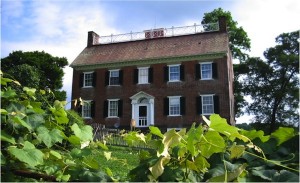 Visit three of Western Pennsylvania’s most historic homes on Saturday, July 23, from 10:30 a.m. to 5:00 p.m. in a “once-only” tour with PHLF. Our organization has been influential in saving or supporting the preservation of all three places, through easements and other strategies that Jack Miller, director of Gift Planning/Easements, will discuss during the tour.
Visit three of Western Pennsylvania’s most historic homes on Saturday, July 23, from 10:30 a.m. to 5:00 p.m. in a “once-only” tour with PHLF. Our organization has been influential in saving or supporting the preservation of all three places, through easements and other strategies that Jack Miller, director of Gift Planning/Easements, will discuss during the tour.From Station Square we’ll head to “Woodville Plantation,” the c. 1775 John and Presley Neville house in Collier Township, where PHLF Trustee Anne Genter will escort our group on a tour of the Virginian vernacular house and grounds. Rania’s Catering will provide lunch.
In Canonsburg, architect Jonathan Glance will describe the first phase of restoration planned for the John Roberts House, begun in 1798, and being transformed into an arts center by the Washington County Cultural Trust.
“Plantation Plenty,” the Isaac Manchester Farm in Avella, Washington County, will be the tour grand finale. PHLF is the first public group invited to tour the 400-acre working farm, placed on the National Trust for Historic Preservation’s 2011 list of America’s 11 Most Endangered Historic Places and on Preservation Pennsylvania’s 2010 Pennsylvania At Risk list, due to threats from longwall mining. Margaret Manchester Pagliarulo, an eighth-generation descendant of Isaac Manchester, will welcome our group into the 1815 Georgian farmhouse. “I am so encouraged that public awareness has risen about the significance of my family’s farm and the devastating consequences that would occur due to longwall mining,” she said.
Reservations are required and space is limited: marylu@phlf.org or 412-471-5808, ext. 527. Wear comfortable walking shoes and dress for the weather. Or, click here for a calendar of events and to register for these tours.
-
HERITAGE SOCIETY EVENT — Sept. 14, 2011
 The annual Landmarks Heritage Society Appreciation Event will be held on a Wednesday evening, September 14 at the Moreland-Hoffstot house in Shadyside. The Landmarks Heritage Society consists of individuals who have made an annual gift of $1,000 or more, and/or who have included Landmarks as a beneficiary of their estate plan or have made a planned gift. Each year the group is recognized at an architecturally or historically significant landmark.
The annual Landmarks Heritage Society Appreciation Event will be held on a Wednesday evening, September 14 at the Moreland-Hoffstot house in Shadyside. The Landmarks Heritage Society consists of individuals who have made an annual gift of $1,000 or more, and/or who have included Landmarks as a beneficiary of their estate plan or have made a planned gift. Each year the group is recognized at an architecturally or historically significant landmark.The Moreland-Hoffstot house is listed on the National Register of Historic Places, is a City-Designated historic structure, and has a PHLF Historic Landmark plaque. It is one of only four remaining homes in what was known as Millionaires’ Row at the beginning of the 20th century. The house was designed by Paul Irwin in 1914. Its basic form, the Grande Trianon at Versailles, had been used by McKim, Mead & White in “Rosecliff” at Newport, RI. Pittsburgh’s Trianon is a provincial model of the Newport house. The interior decoration of the house is in the same French Renaissance style so evident in the exterior composition and ornamentation.
The invitation-only event is underwritten by The North Shore Group at Morgan Stanley Smith Barney-New York, Alan Greenberg, Senior Vice President, Financial Advisor, and Matthew A. Thompson, CIMA®, Associate Vice President, Financial Advisor. The North Shore Group is dedicated to assisting families with implementing the most appropriate strategies to transition wealth to both their families and their philanthropic interests.
Persons making qualifying gifts through August 15th will be invited to the event.
For more information, please contact Jack Miller at jack@phlf.org or 412-471-5808, ext. 538.
Become a Heritage Society Member
Make a Quick & Targeted Donation Today. -
PHLF Testimony on Civic Arena
Pittsburgh History & Landmarks Foundation
Testimony Regarding the Nomination of the Civic Arena to Become a City-Designated Historic Structure
City of Pittsburgh, City Council Public Hearing
May 23, 2011
Good afternoon, my name is Anne Nelson. I am the general counsel of the Pittsburgh History & Landmarks Foundation, and I am here today on behalf of the organization.
The Civic Arena was part of a project conceived by philanthropist Edgar J. Kaufmann, Sr. and funded as an innovative public-private partnership that was intended to be a grand contribution to the region––a “civic” auditorium and convention center. James A. Mitchell of Mitchell & Ritchey (1938-1957), the premier Pittsburgh architectural firm during the City’s Renaissance, designed the Arena in 1954; it was completed in altered form in 1961. It was a daring, contemporary design and an extraordinary feat of engineering with the world’s largest retractable roof. Mr. Mitchell also designed Mellon Square Park, and the firm served as associate architects for the Alcoa Office Building (now the Regional Enterprise Tower). For these reasons, Landmarks supported the Arena’s nomination in 2003 to become a City-Designated Historic Structure, particularly under criteria three of the City’s historic preservation ordinance, which is still applicable today.
Whether you all approve the nomination or not in 2011, we want to reiterate two points for your consideration that Landmarks has articulated in a position paper as a result of the SEA’s September 2011 vote to demolish the Arena.
First, we believe there is the possibility of jeopardizing the future use of federal funds for the redevelopment of the entire 28-acre Lower Hill site if Section 106 of the National Historic Preservation Act is not complied with prior to the demolition of the Arena. Section 110(K) of the Act prohibits “anticipatory demolitions” by placing a penalty on applicants of federal funds, including local governments that intentionally destroy or harm historic properties prior to the completion of the Section 106 review process. The State History Code review that was recently completed by the SEA does not fulfill the requirements and processes that are clearly defined in the Section 106 regulations.
The National Trust for Historic Preservation, our organization, and others have informed the SEA that proceeding with the demolition of the Arena may jeopardize the future use of federal funds at the site and make the funds vulnerable to legal challenge.
Second, in the case of the Arena, we would favor its preservation if a practical plan were to be put forth that did not add to the financial burden of the City or County, that generated tax revenues from the land in the Lower Hill and development opportunities as well, and was supported by Hill District residents.
If the Arena is to be removed, we then support the plan to establish an urban street grid, opening the land to provide a variety of developments opportunities, and we will suggest that a high standard of contemporary design be required.
We encourage City Council to carefully consider all of the information provided when considering the nomination, but especially the sentiments of the Hill District residents since this decision directly impacts their community.
Thank you for your time.
-
PHLF Awards $4,000 Scholarships to Five College-Bound Students
The Landmarks Scholarship Committee of the Pittsburgh History & Landmarks Foundation (PHLF) has selected five high-school graduates from Allegheny County to receive $4,000 college scholarships (payable over four years), for book and tuition expenses only. “Forty-five students from Allegheny County have been awarded college scholarships since the program’s inception in 1999,” said Committee Chair David Brashear. “Several of those recipients are now employed in Pittsburgh as architects, bridge inspectors, engineers, teachers, and researchers––and all of them are accomplished people, involved in their communities and proud of Pittsburgh.”
A luncheon celebration is scheduled on Monday, June 20 for the five 2011 winners and former recipients.
PHLF received 70 applications this year––a record number––and was able to award five scholarships, thanks to the continuing support of the Brashear Family Fund at PHLF and generous donations from others. “This program helps us connect with young people who value Pittsburgh’s history, architecture, and landscape design, and who we believe will contribute to Pittsburgh during their lifetime,” said Louise Sturgess, executive director of PHLF. The five scholarship recipients are:
- Shane A. Fischbach of Pittsburgh Allderdice High School, who has been admitted to Brown University’s Program in Liberal Medical Education and will be majoring in History and Urban Studies;
- Lisa M. Stabryla of Pittsburgh Carrick High School, who will be majoring in Engineering atthe University of Pittsburgh;
- Jaela C. Wesley of Pittsburgh Schenley High School, who will be studying History, Languages, and International Studies at Spelman College;
- Anthony N. Chmura of North Hills High School, who will be studying Mechanical Engineering at the University of Notre Dame;
- Christopher J. Guyan of South Fayette High School, who will be majoring in Civil Engineeringat Penn State University;
The Landmarks Scholarship Program is the culmination of PHLF’s educational programs for thousands of students (K-12) in Allegheny and surrounding counties. It gives Allegheny County students an incentive to excel in school, become involved in their communities, and express their commitment to this region in a meaningful way.
The Pittsburgh History & Landmarks Foundation Scholarship Program is offered each year. Applications for the 2011-12 school year will be available in January 2012. Applicants must:
- live in Allegheny County;
- be a high school senior who has been accepted to a college or university;
- have a cumulative Grade Point Average at the end of the first semester senior year of 3.25 or greater; and
- write an essay on a certain topic, complete an application, and submit two letters of recommendation.
2011 Landmarks Scholarship Recipients: Essay Excerpts
Scholarship applicants were asked to write about a place in Allegheny County that is important to them and has affected them personally. The essays of all scholarship applicants, from 1999 to 2011, are archived at the Pittsburgh History & Landmarks Foundation.
Shane A. Fischbach
A graduate of Pittsburgh Allderdice High School, Shane Fischbach has been admitted to Brown University’s Program in Liberal Medical Education and will be majoring in History and Urban Studies.
In his scholarship essay, Shane wrote that “My school, Taylor Allderdice High School, has withstood economic and architectural assaults, evolving into a historical landmark which encapsulates the growth, decline, and resurgence of the Pittsburgh community it serves . . . If Mr. Trimble [the architect] could revisit his educational masterpiece, would he shudder? Or would he be pragmatic and forgive the utilitarian architectural additions that were instituted in response to economic, cultural and political evolution? I am confident that he would perceive the durability and sustainability of his original design in spite of modern, superficial and practical modifications. Even with its architectural imperfections, Allderdice is “home.” I am proud that it has evolved from a mythical Mount Olympus into an institution that accommodates an integrated and more equitable society of learners. The impressive façade might have lost its original grandeur, but the temple on the hill was transformed into a superior educational institution, which has withstood the ravages of architectural compromises and epitomizes the theme of accessibility in public education.”
Lisa M. Stabryla
A graduate of Pittsburgh Carrick High School, Lisa Stabryla will be majoring in Engineering at the University of Pittsburgh.
In her scholarship essay, Lisa describes her experience at the Carnegie Library of Homestead: “Growing up in Allegheny County you will find yourself encompassed by a vast number of communities and neighborhoods, each unique in its own way. . . . For me, my excitement lies within the walls of the Carnegie Library of Homestead, majestically standing on a hilltop overlooking the town and river. . . . As I walk up the steps leading to the main entrance of the library, there is a feeling of greatness that surrounds me. The pure force of the architecture draws me in. . . . The library not only houses books, but offers so much more to the community. It is a place where the community can meet to learn and socialize. . . . I am glad to make the library a special part of my life as it was to my grandmother; I continue to impart and bestow those values onto my niece, and maybe someday onto my children. As voices are heard echoing throughout, the history contained in these walls is endless. The Carnegie Library of Homestead unites all generations of people together.”
Jaela C. Wesley
A graduate of Pittsburgh Schenley High School, Jaela Wesley will be attending the University of Miami to study History, Languages, and International Studies.
In her scholarship essay, Jaela wrote: “Imagine it’s a sunny day and you are leaving Downtown Pittsburgh walking up Centre Avenue past the Mellon Arena towards the Hill District. . . . You look up the street to see just how much more you have to climb before the street levels off and something catches your eye in the distance. You ask yourself, ‘What is that on top of that church on the corner?’ . . . The landmark is the statue of St. Benedict the Moor. . . . Even though I am not Catholic, I am always in awe when I look up at that statue. There seems to be a certain sense of calm about St. Benedict. You can feel the peace and serenity. . . . Welcome to the Hill District and its rich history!”
Anthony N. Chmura
A graduate of North Hills High School, Anthony Chmura will be attending the University of Notre Dame to study Mechanical Engineering.
In his scholarship essay, Anthony wrote that the “Sarah Heinz House Boys and Girls Club on the North Side of Pittsburgh epitomizes the term important. . . . Robert Maurice Trimble designed the building . . . [which] still contains the original Stickley furniture in the lobby. The stained glass windows in the stairwells were designed and installed by the esteemed J. Horace Rudy. . . . Sarah Heinz House is also LEED certified. . . . Despite the impact of the building itself, it is what goes on inside Sarah Heinz House that makes it truly special. I have been attending Heinz House for twelve years, and without my involvement there, I would not be who I am today. I was a shy, introverted kid. My insecurities truly blocked me from progressing socially, mentally, and physically. . . . Sarah Heinz House opened numerous doors for me. . . . I have discovered my two great passions: serving youth and engineering. Through robotics, I have learned many things. I unknowingly gained a greater grasp of math and science, while having a lot of fun. I learned I enjoy designing and building. . . . More importantly, I have learned the true value of being a mentor and friend. Spiderman’s Uncle Ben said, “With great power comes great responsibility.” I realize how blessed I have been, and I feel compelled to give back.
Christopher J. Guyan
A graduate of South Fayette High School, Christopher Guyan will be attending Penn State University to study Civil Engineering.
In his scholarship essay, Christopher wrote: “PPG Place is quintessential ‘Pittsburgh.’ It blends the old and the new into an impressive icon that streaks above the skyline of downtown. . . . The complex consists of a 40-story tower and five satellite buildings. The design is in a Neo-Gothic style, inspired by the Cathedral of Learning and the Allegheny County Courthouse. Each building has a façade of modern glass with traditional gothic spires adorning the top. This blend successfully captures the history and heritage of Pittsburgh. . . . I have really enjoyed living so close to the city and being able to experience all of the history and architecture in the area. I have always been interested in art and drawing, and have drawn pictures that included parts of Pittsburgh. . . . The exposure to the city has also helped me to decide on my college major and my future career. I found a true passion for architecture when I moved here. . . . I enjoy roads and bridges, and the architecture of Pittsburgh has led me to decide to be a transportation engineer.”




